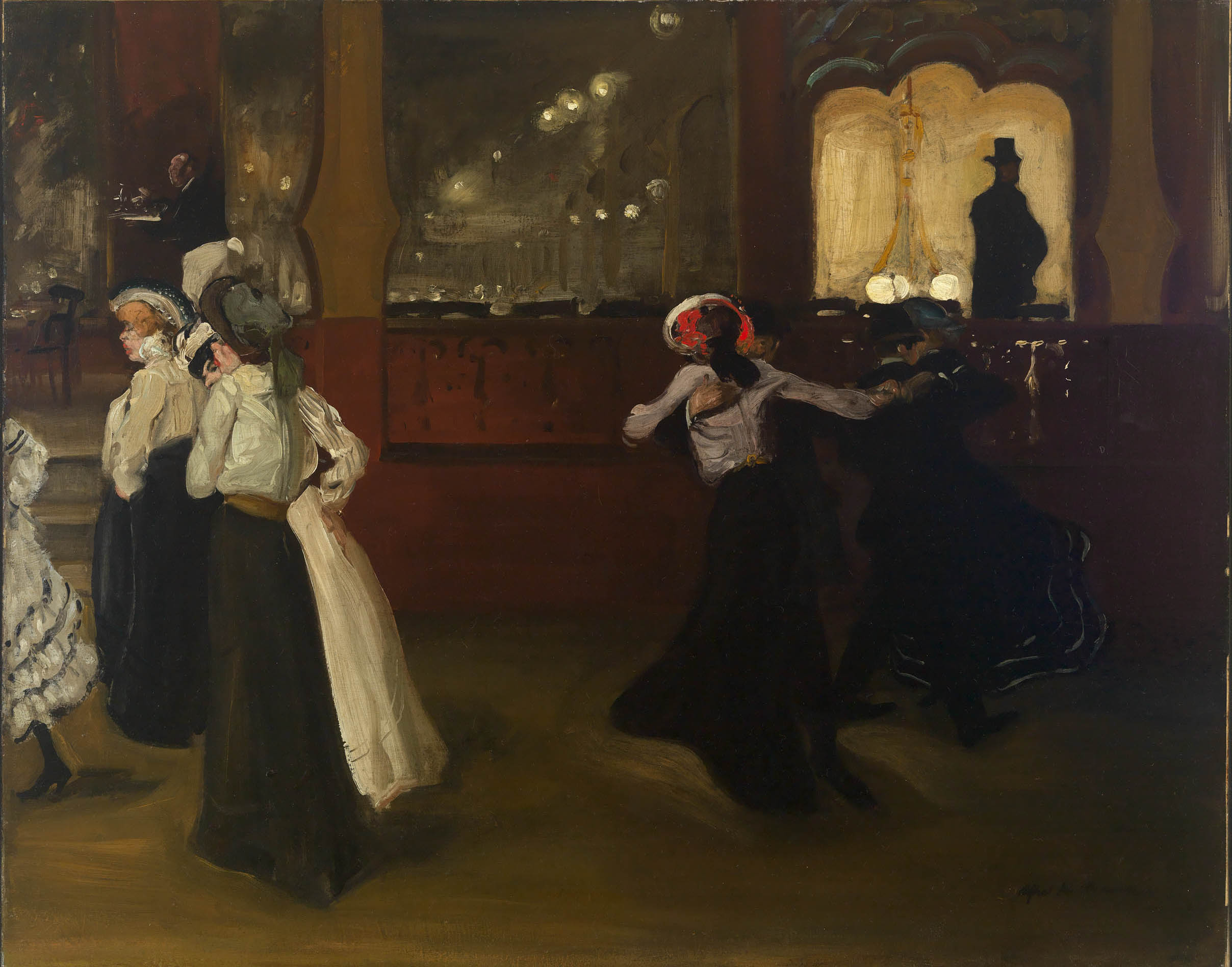february 17–APRIL 21, 2013
COMPOSITE SPACES
The increasingly diverse lighting technologies of the later century—from oil and gas to electrical arc lamps—produced jarring contrasts and disorientation for Parisians passing between illuminated settings. Lighting could enhance or even exaggerate architectural boundaries, but it could also do the opposite.
Some representations emphasize the divisions between different spaces, while in others, edges melt away and spatially distinct locations appear to flow together so that real divisions between spaces become blurred. The quantity and variety of lights in a given setting also carried different associations: ambiguous spatial divisions could produce daringly modern visual compositions, while an excess of different types of light often appears in pictures that record the crass, raucous side of modern public life.
Alfred Maurer (American, 1868–1932), The Bal Bullier, c. 1900–01. Oil on canvas, 28 13/16 x 36 5/16 in. (73.18 x 92.23 cm). Smith College Museum of Art, Northampton, Massachusetts. Purchased, SC 1951:283


